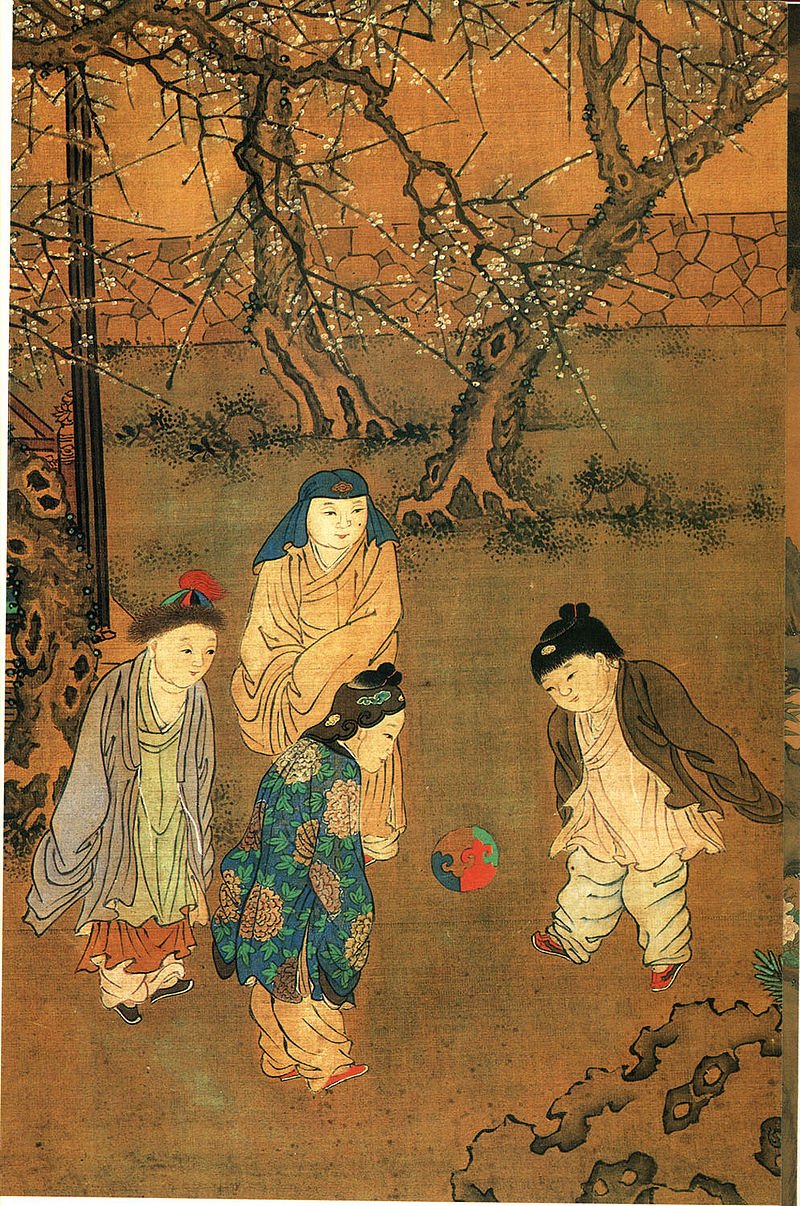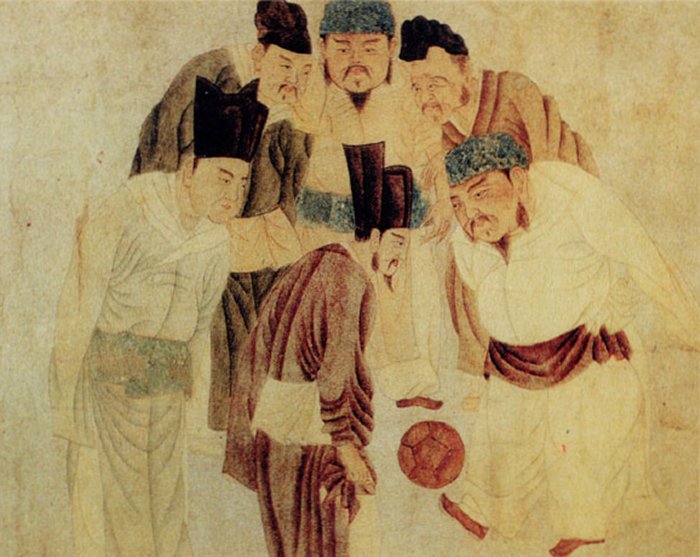Ancient Chinese Ball Game Cuju Is Earliest Form Of Football
Conny Waters - AncientPages.com - An interesting question is when and where we started playing football.
There are several references to traditional, ancient, or prehistoric ball games played by indigenous peoples in many parts of the world. The history of football stretches far back in time. According to FIFA, the competitive game cuju is the earliest form of football for which there is scientific evidence.
One Hundred Children in the Long Spring, a painting by Chinese artist Su Hanchen, active AD 1130–the 1160s), Song Dynasty. Image credit: Su Hanchen - source - Public Domain
Cuju is an ancient Chinese ball game, Cantonese "chuk-ko". It is a competitive game that involves kicking a ball through an opening into a net. The first mention of cuju in a historical text is in the Warring States era Zhan Guo Ce, in the section describing the state of Qi.
It is also described in Sima Qian's Records of the Grand Historian (under Su Qin's biography), written during the Han Dynasty. A competitive form of cuju was used as fitness training for military cavaliers, while other forms were played for entertainment in wealthy cities like Linzi.
During the Han Dynasty (206 BC-AD 220), the popularity of cuju spread from the army to the royal courts and upper classes. It is said that the Han emperor Wu Di enjoyed the sport. At the same time, cuju games were standardized, and rules were established. Cuju matches were often held inside the imperial palace.
Emperor Taizu of Song playing cuju with Prime Minister Zhao Pu, by the Yuan-era painter Qian Xuan (1235–1305). Image credit: Qian Xuan - source - Public Domain
Later, the sport was improved during the Tang Dynasty (618-907). First of all, the feather-stuffed ball was replaced by an air-filled ball with a two-layered hull. The capital of Chang'an during this dynasty was filled with several cuju football fields, which were even established on the grounds of the palaces.
Soldiers in the imperial army and Gold Bird Guard often formed cuju football teams to delight the emperor and his court.
Also, two types of goalposts emerged: One was made by setting up posts with a net between them, and the other consisted of just one goalpost in the middle of the field. The level of female cuju teams also improved. Records indicate that once, a 17-year-old girl beat a group of army soldiers. Cuju football even became popular amongst scholars and intellectuals, and if a courtier lacked skill in the game, he could pardon himself by acting as a scorekeeper.
During the Song Dynasty (960-1279), Cuju flourished thanks to social and economic development, and its popularity reached every class. Cuju organizations were set up in large cities called Qi Yun She or Yuan She - now known as the earliest professional cuju club - whose members were either cuju lovers or professional performers. There was only one goalpost set up in the center of the field.
Non-professional players had to formally appoint a professional teacher and pay a fee before becoming a member.
Cuju began its decline during the Ming Dynasty (1368-1644) due to neglect, and the 2,000-year-old sport slowly faded away. Now it is coming back again, gaining more and more popularity.
Modern football has its origin in the streets of medieval England. Neighboring towns would play each other in games where a heaving mass of players would struggle to drag a pig's bladder by any means possible to markers at either end of town. Football became so violent in England that the king banned it for over 300 years.
Updated on March 3, 2023
Written by Conny Waters – AncientPages.com Staff Writer
Copyright © AncientPages.com All rights reserved. This material may not be published, broadcast, rewritten or redistributed in whole or part without the express written permission of AncientPages.com
Expand for referencesReferences:
Image: A Song Dynasty painting by Su Hanchen, depicting Chinese children playing cuju - Credit: Su Hanchen
More From Ancient Pages
-
 On This Day In History: Hubble Space Telescope Was Launched – On April 24, 1990
News | Apr 24, 2016
On This Day In History: Hubble Space Telescope Was Launched – On April 24, 1990
News | Apr 24, 2016 -
 Frey – Handsome Vanir God Of Fertility And Lord Of The Elves In Norse Beliefs
Featured Stories | Mar 3, 2018
Frey – Handsome Vanir God Of Fertility And Lord Of The Elves In Norse Beliefs
Featured Stories | Mar 3, 2018 -
 Homo Bodoensis Is A New Species Of Human Ancestors Who Lived Half A Million Years Ago
Archaeology | Nov 1, 2021
Homo Bodoensis Is A New Species Of Human Ancestors Who Lived Half A Million Years Ago
Archaeology | Nov 1, 2021 -
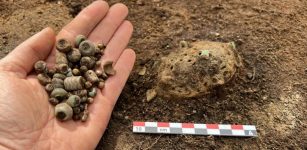 Amazing Artifacts Found In Viking Double Grave In Norwegian Garden
Archaeology | Jul 10, 2023
Amazing Artifacts Found In Viking Double Grave In Norwegian Garden
Archaeology | Jul 10, 2023 -
 Illness And Death Of The Edward Of Woodstock ‘Black Prince’ Changed The Course Of English History
Archaeology | Dec 21, 2022
Illness And Death Of The Edward Of Woodstock ‘Black Prince’ Changed The Course Of English History
Archaeology | Dec 21, 2022 -
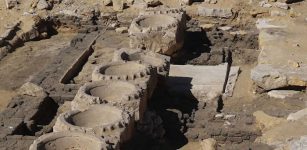 4,500-Year-Old Lost ‘Sun Temple’ Dedicated To God Ra Unearthed In Abu Gorab Necropolis
Archaeology | Aug 4, 2022
4,500-Year-Old Lost ‘Sun Temple’ Dedicated To God Ra Unearthed In Abu Gorab Necropolis
Archaeology | Aug 4, 2022 -
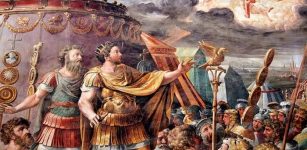 How The Strange Dream Of Roman Emperor Constantine Changed History
Ancient History Facts | Sep 29, 2017
How The Strange Dream Of Roman Emperor Constantine Changed History
Ancient History Facts | Sep 29, 2017 -
 Palatine Light Legend Is Based On A True And Tragic Event – What Really Happened On Block Island
Featured Stories | Dec 4, 2020
Palatine Light Legend Is Based On A True And Tragic Event – What Really Happened On Block Island
Featured Stories | Dec 4, 2020 -
 Rare Upper Paleolithic Human Remains Discovered In The Iberian Peninsula
Archaeology | Aug 12, 2021
Rare Upper Paleolithic Human Remains Discovered In The Iberian Peninsula
Archaeology | Aug 12, 2021 -
 Unexplained Mystery Of The Untraceable Stone-Throwers – Strangeness In Australia And New Zealand – Part 2
Featured Stories | Nov 13, 2019
Unexplained Mystery Of The Untraceable Stone-Throwers – Strangeness In Australia And New Zealand – Part 2
Featured Stories | Nov 13, 2019 -
 Artifacts And Remnants Of 3,000-Year-Old City Unearthed Near Great Zab River In Iraqi Kurdistan
Archaeology | Jun 5, 2017
Artifacts And Remnants Of 3,000-Year-Old City Unearthed Near Great Zab River In Iraqi Kurdistan
Archaeology | Jun 5, 2017 -
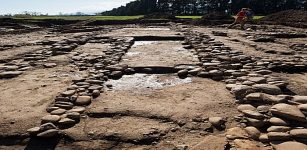 Sanctuary Of God Mithra And His Mysterious Religion Unearthed In Corsica
Archaeology | Mar 2, 2017
Sanctuary Of God Mithra And His Mysterious Religion Unearthed In Corsica
Archaeology | Mar 2, 2017 -
 Baba Yaga Lego Created By Russian Artist Brings Classic Slavic Mythological Figures To Life
Myths & Legends | Feb 23, 2021
Baba Yaga Lego Created By Russian Artist Brings Classic Slavic Mythological Figures To Life
Myths & Legends | Feb 23, 2021 -
 Powerful Thunderbird Sent By The Gods To Protect Humans From Evil In Native American Legends
Featured Stories | Mar 26, 2017
Powerful Thunderbird Sent By The Gods To Protect Humans From Evil In Native American Legends
Featured Stories | Mar 26, 2017 -
 Ancient Native American Stories Of Great Floods In Tennessee Confirmed By Scientists – 1867 Flood Was Not The Worst One
News | Aug 26, 2020
Ancient Native American Stories Of Great Floods In Tennessee Confirmed By Scientists – 1867 Flood Was Not The Worst One
News | Aug 26, 2020 -
 Mystery Of The Hidden Wooden Hieroglyphic Tablets And The Unknown White Bearded Men – The Civilization That Died Twice – Part 2
Civilizations | Mar 6, 2021
Mystery Of The Hidden Wooden Hieroglyphic Tablets And The Unknown White Bearded Men – The Civilization That Died Twice – Part 2
Civilizations | Mar 6, 2021 -
 The Gold Compartment At Habu Temple Looks Magnificent After Restoration
Archaeology | Aug 20, 2022
The Gold Compartment At Habu Temple Looks Magnificent After Restoration
Archaeology | Aug 20, 2022 -
 Meenakshi Temple Of Madurai Is Among Most Powerful Sacred Sites For Hindu People
Featured Stories | Apr 29, 2021
Meenakshi Temple Of Madurai Is Among Most Powerful Sacred Sites For Hindu People
Featured Stories | Apr 29, 2021 -
 Face-To-Face Encounter With Young Scottish Soldier Who Lived And Died Over 300 Years Ago
Archaeology | Dec 23, 2017
Face-To-Face Encounter With Young Scottish Soldier Who Lived And Died Over 300 Years Ago
Archaeology | Dec 23, 2017 -
 Cave 53 In Qumran Region In Judean Desert Reveals More Secrets
Archaeology | Feb 28, 2022
Cave 53 In Qumran Region In Judean Desert Reveals More Secrets
Archaeology | Feb 28, 2022

